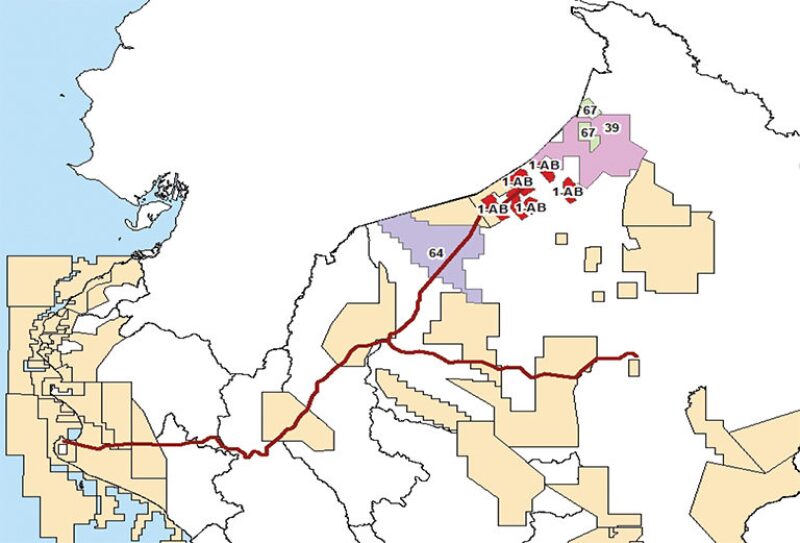Mature heavy-oil fields in the northern Peruvian jungle have produced oil for more than 40 years under primary recovery mechanisms (cold methods). The complete paper explores technical and economic development options to produce heavy-oil resources at commercial rates and showcases three optimization scenarios of higher recovery efficiency aimed at increasing net present value at the basin level.
Introduction
The constant decline of medium- and light-oil production in most Peruvian fields in recent years, along with the increase in domestic demand, indicates that innovative redevelopment strategies should be implemented for recent large heavy-oil discoveries in the Marañon Basin.
The Norperuano pipeline in its current condition and egress capacity allows exploitation of proved developed producing volumes of Blocks 64, 192, 8, and 95 but constrains the commerciality and development possibilities for Block 67 (Piraña, Dorado, and Paiche fields) and Block 64 (Situche field), which jointly could produce up to 70,000 B/D between 2027 and 2029. The main issue is the present constraint for transportation and blending of heavy oil and diluents. Therefore, an infrastructure revamp is necessary. The authors believe that capital expenditure (CAPEX) to carry out these improvements and expansions is necessary and must be addressed between the operators in the area and the Peruvian government while considering all social and current environmental issues.
Analysis of Production Performance and Recovery
Most Peruvian heavy-oil fields have been discovered in the Marañon Basin. Production history indicates a strong waterdrive mechanism by which oil production declines as water rate increases, while reservoir pressure is sustained with a less than 20% pressure decrease.
Generally speaking, Marañon wells have been drilled following slant trajectories and are only completed with slotted liners without a selective completion.


